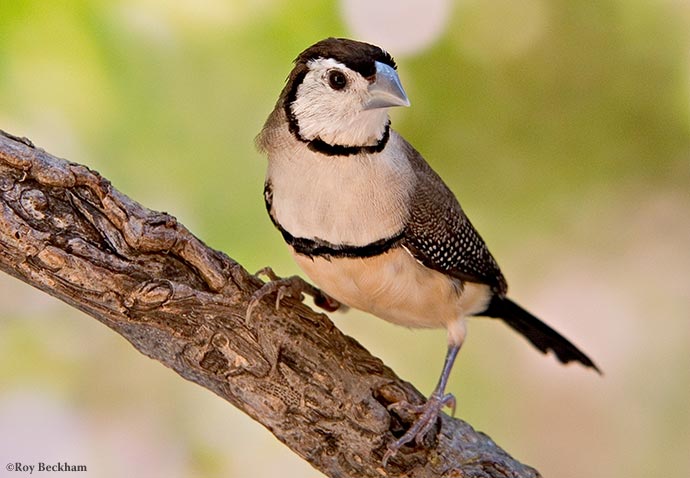




 |
|
|||||||||||||||||||||
 |
|
|
|
|
|
|
|
|
|
|||||||||||||
|
|
|
|
|
|
||||||||||||||||||
|
|
|
|
|
|
|
|
|
|
||||||||||||||
|
|
|
|
|
|
||||||||||||||||||
|
|
|
|
|
|
|
|
|
|
||||||||||||||
|
|
|
|
|
|
||||||||||||||||||
|
|
|
|
|
|
|
 |
|
|||||||||||||||
 |
 |
|
||||||||||||||||||||
|
|
|
|
||||||||||||||||||||
|
|
|
|
|
|
|
|
|
|
|
|
|
|
|
|
|
|
|
|
|
|
|
|
| Owl Finch - Taeniopygia bichenovii | ||||
 |
||||
| Owl Finch | ||||
|
Common Names Description There is one subspecies listed for the Owl, T. b. annulosa, or the Black-rumped Owl finch. The only difference that survives of this subspecies in aviculture is the black rump coloration which is autosomal recessive to the nominate form. In the wild there are some other differences in size and tail length, but these have been lost in the crosses with the nominate white-rumped variety. Birds that are the result of a white-rump crossed with a black-rump will show some mottling of the rump color. These birds hold the recessive gene for the black-rump coloration. These birds can then be crossed with other birds showing this mottling or to Black-rumped Owls to produce more of the black-rump color. Diet Breeder's Notes The biggest difficulty with Owl finches is getting them to settle down long enough to nest (problem is second only to accurately sexing the Owls). The little guys act more like waxbills than their nearest cousin the Zebra finch. I learned from another breeder to offer plenty of cover when trying to breed them in cages. I'll tie bamboo branches or plastic plants to the outside of the cage to offer them some cover (bamboo covered cage). Even though they have a definite preference for the woven baskets, I try to get them to use nest boxes instead. The baskets are difficult to check on and their nails can get caught in the weaving. My parents now have an Owl finch without a foot because of these baskets. The nest boxes constructed of milk cartons seems to be ideal for the Owls as well. Owl finches can be fostered under Zebra or Society finches. When trying to foster eggs with a pair of Zebra finches, I recommend not mixing the clutch with zebra eggs. Even though the chicks are nearly identical in appearance, I could still identify them by the greater amount of fuzz and the mouth markings. Apparently, so could the Zebra finches who tossed them out. It could have been the amount of fuzz, the mouth markings, the begging noises or their more rapid head and neck movements of the begging chicks. I feel that the Zebras would have taken care of them had they not been mixed in with their own chicks. I have not had any problems fostering them under Society finches, even when mixed with Zebras, Rufous-backed mannikins and Society finches.
Additional Notes Owls will hybridize with a number of species including the Zebra finch. Even though they are closely related to Zebras, the hybrid is apparently not fertile (Zebra x Owl Hybrid.) Owl finch chicks will display some odd behavior for an Australian species. They will raise an opposing wing while begging. This is very similar to a pattern shown by African mannikins such as the Rufous-backed mannikin. It is believed that this is to shield other siblings from the feeding parent. It does not seem to retain this behavior into adulthood as a defense posture like the Rufous however. |

Wild Black Rump Owl finches taking a morning bath at Cape Crawford, NT Australia
